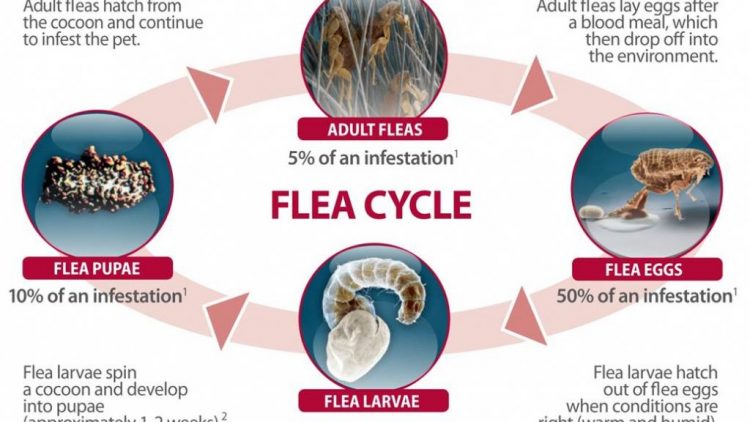Is your dog itching and biting its hair out? Has your dog become nervous or does it scratch itself? Have a closer look at your pet, examine the skin, and pull the hair apart in the most delicate places – on the stomach, the neck, and in the armpits. Your dog is likely to have a flea infestation.
Flea Eradication
Flea eradication requires treatment of pets, and oftentimes the premises. Your level of success will depend on how these treatments are performed. This post will help you eliminate fleas and reduce the risk of future infestation.
Unlike most household pests, fleas bite dogs and cats as well as people. The bites can cause intense itching and irritation, and a hypersensitive animal will often require veterinary assistance. Fleas can also transmit tapeworms and bacterial infections. The pests are highly prolific – the biting adult stage might be living on the pet, in addition to hundreds or thousands of eggs, larvae, and pupae elsewhere in the home or yard. If early signs of fleas are ignored, infestations can quickly spiral out of control.
There are several ways of how to get rid of fleas on dogs.
Chemical Treatment
Flea Drops: Drops are probably best flea treatment for dogs and the most simple-to-use treatment, popular with dog owners. These flea remedies are sold pre-dosed in droppers and are to be used on the dog’s shoulder. Being absorbed through the skin, these flea killer drops start acting in the blood, causing flea paralysis. If you have more than one pet, it is necessary to use flea killer drops on all of them and refrain from bathing the pets after the treatment. Flea killer drops are suitable for almost all animals except for pregnant and lactating females, and puppies less than 4 weeks of age. This remedy to get rid of fleas is efficient, economical, and simple-to-use.
Flea Spray and Shampoo: Bathe or spray the dog with a flea spray or shampoo and treat the dog with a monthly product to prevent re-infestation. You will not be able to get all the pupae the first time, but the next month’s application will take care of the new adults. Make sure you re-apply the treatment each month until the problem is under control.
Flea Collars: This most popular and comfortable flea killer remedy has constant action, does not annoy the pet. Flea collars contain toxic agents, so they are not to be used with pregnant and lactating females, as well as puppies aged less than 6 months.
Mechanical treatment
It is advisable to use mechanical ways to get rid of fleas in pregnant and lactating female dogs as well as for puppies aged less than 4 weeks. This home remedy for fleas is based on brushing fleas with a flea comb and removing insects manually. In order not to harm the future progeny, it is necessary not to put the dog under stress. That is why even simple bathing can lead to undesired consequences, while the use of chemical substances is prohibited since it may cause the death of future puppies.
In such cases, it is better to consult a veterinary or to protect the pregnant female dog using a flea comb.
Flea Control and Prevention
To hasten elimination of fleas within the home, it may be desirable to treat the premises along with the pet. This is especially true with severe infestations when pets and people are suffering irritation from bites.


